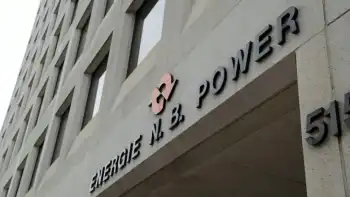Renewable home energy
- Dependent upon where you live in the world, the carbon emissions generated for each kilowatt of energy consumed in your home will vary.
EveryoneÂ’s electricity provider has a different carbon emission value, dependent upon whether the electrical power is generated using coal, gas, oil, nuclear or from renewable sources such as hydro, wind or solar. Even if your utility advertises itself as providing green power, check on what type of energy they are buying from other providers during off-peak hours, it can make a big difference to their aggregate emissions.
If the electrical utility that generates your power has a lot of hydroelectric plants, which are considered to be renewable energy sources, then the corresponding emissions may be low. In the U.S. Pacific Northwest there is a lot of hydro and the emission rate is around 0.408kgs per kilowatt-hour, but elsewhere in the U.S. the emission rate can be as high as 0.890kg per kWh, according to 2005 data.
In British Columbia, Canada, BC Hydro buys a lot of cheap rate electricity from Alberta and the U.S., which is profitable for BC Hydro who then sells it at a higher rate to domestic customers. It is also profitable for suppliers since they get some money to offset the cost of keeping their power stations running twenty-four hours a day.
However, this arrangement is not so great for the eco-friendly home-owner who really wants to lower their emissions and carbon footprint. Even though eco-friendly home owners may do all they can to reduce their energy consumption at home, buy a hybrid vehicle, or even a plug-in hybrid or electric car, the one thing they canÂ’t do is buy green power from the grid that is truly free from an emissionsÂ’ footprint.
For people seeking truly green sources of energy, the best alternative is to generate your own electricity, knowing it is going to be sustainable, and have lower emissions than anything you can get from the electrical grid. It is unlikely you can generate enough energy to power your home completely, unless you have a very low energy consumption, live in a very sunny location with year round sun, a windy location with wind blowing much of the time, or happen to have a large river flowing through your property.
However, there are many options available home owners interested in generating their own electricity, but most involve quite an initial investment of money and resources, so it is best to thoroughly research what is possible in the area where you live.
If you really would like to try and generate electricity for yourself, at least enough to provide for a low energy use home of around 10-12kWh per day, then combining a solar photovoltaic system and a small wind-turbine might be worth considering.
Generally, when there is sunny weather it usually is not windy until it cools a little at night or warms during the day and a breeze starts to blow. Similarly, if it is windy during the day then often it is not sunny, since a weather front may be pushing clouds along with the breeze.
A more economical option is a combined solar and wind system and is best combined with electricity supplied from the grid (unless you are completely off-grid), so that batteries are not required. Batteries generally are a costly part of creating a renewable home energy system. However, by utilizing grid electricity, homeowners will be trading clean renewable energy with the more emission intensive grid.
It is not possible for everyone to have a photovoltaic system and a wind-turbine, but if you live in the countryside, or have at least an acre of open space, then a small wind-turbine of around 3-5kW capacity and an estimated 1 square metre of solar panel will give a reasonable energy production, at a higher price than what you can buy it directly from the grid though.
In western Canada, such a system would cost around $20,000-25,000 plus tax, produce a yearly average of 5.7megaWh and a kWh cost of around 40 cents versus 8 cents from the grid directly. With an energy efficient home using an estimated 11kWh per day (4megaWh a year), then 2.1megaWh would need to be purchased from the grid when wind and solar arenÂ’t enough at certain times of the year. When your home system is producing more then 3.8megaWh it can be sold back to the grid.
Creating renewable energy systems can be costly for the homeowner, but for some people being able to have emission free electricity (after writing off the carbon cost of buying and constructing the system) is be worth the price. For the plug-in hybrid or electric vehicle owner, a home renewable energy source to recharge their vehicle would make a daily commute almost carbon free too.
Related News

Hong Kong to expect electricity bills to rise 1 or 2 per cent
HONG KONG - Hong Kong customers have been asked to expect higher electricity bills next year, with a member of a government panel on energy policy anticipating an increase in tariffs of one or two per cent.
The environment minister, Wong Kam-sing, also hinted they should be prepared to dig deeper into their pockets for electricity in the wake of power companies needing to use more expensive but cleaner fuel to generate power in the future.
HK Electric supplies power to Hong Kong Island, Lamma Island and Ap Lei Chau. Photo: David Wong
The city’s two power companies, HK Electric and CLP Power,…




